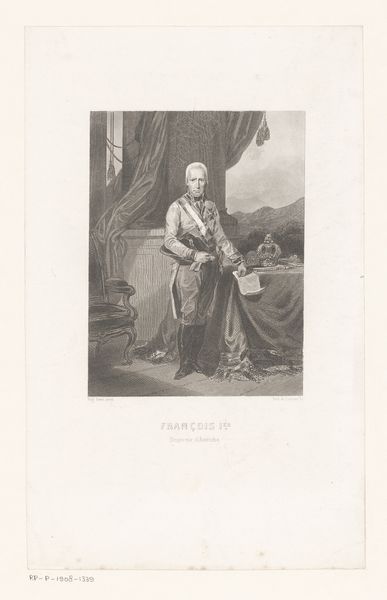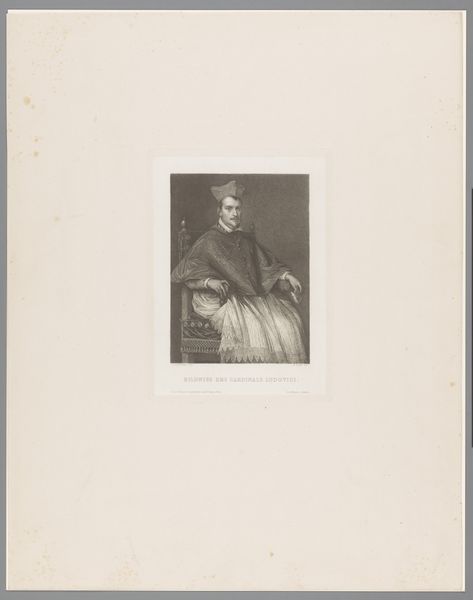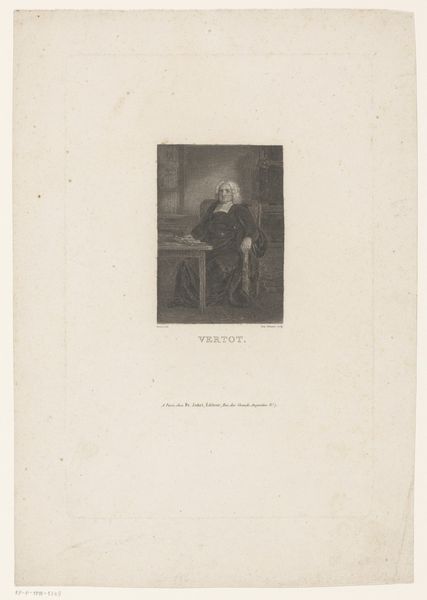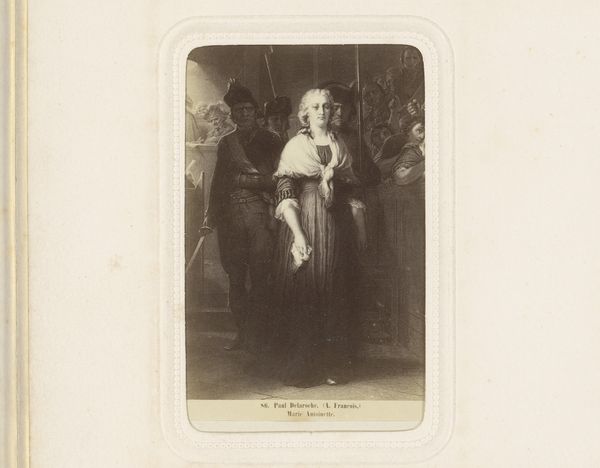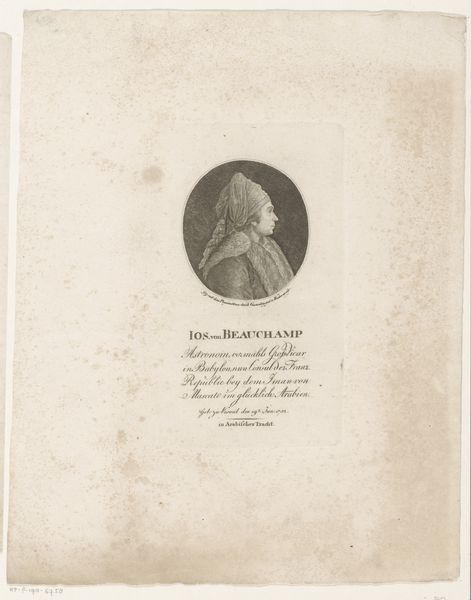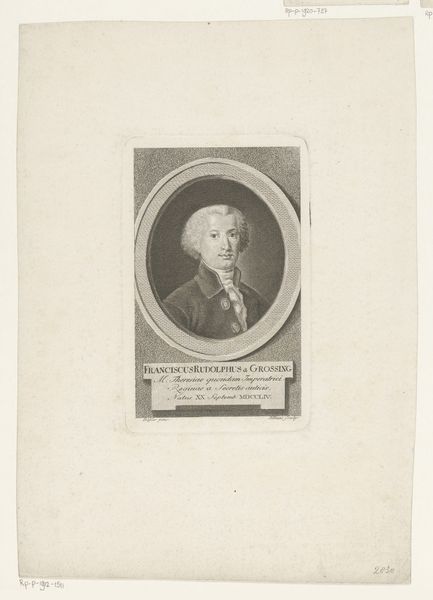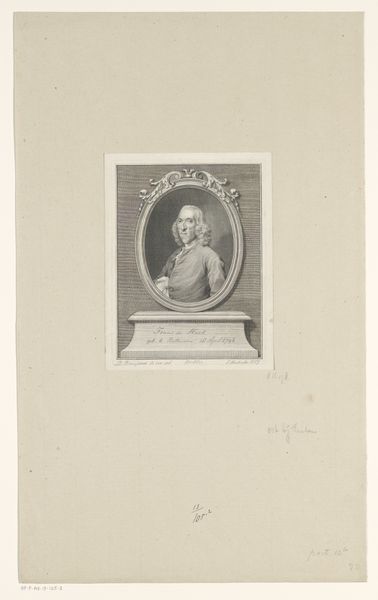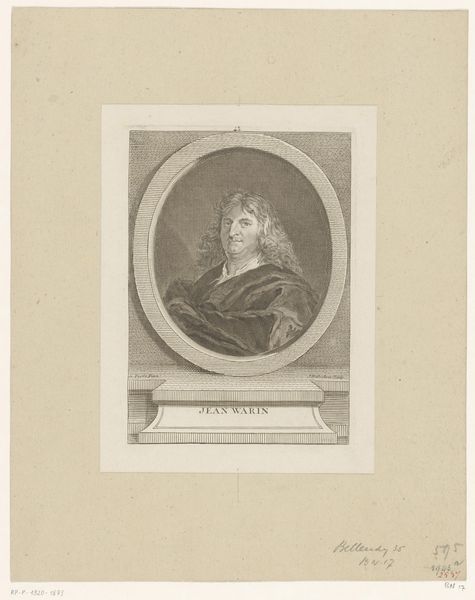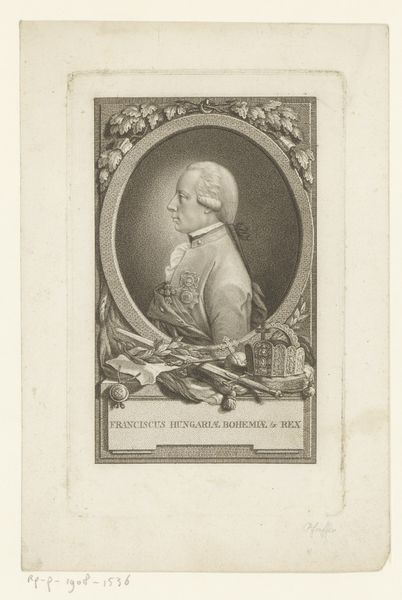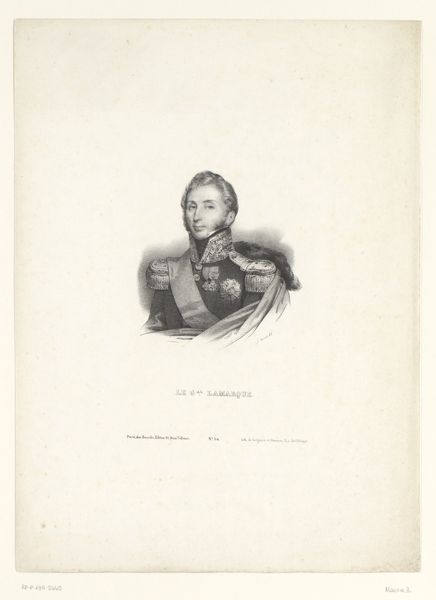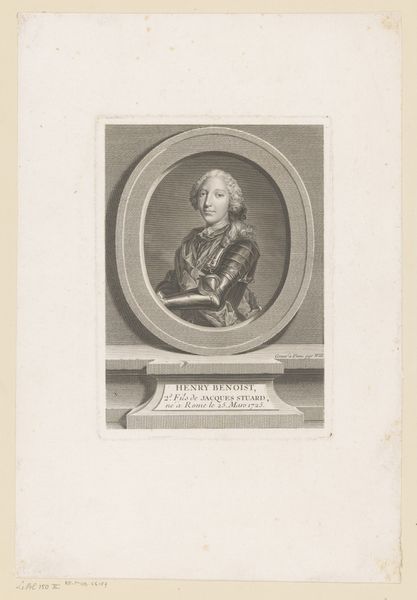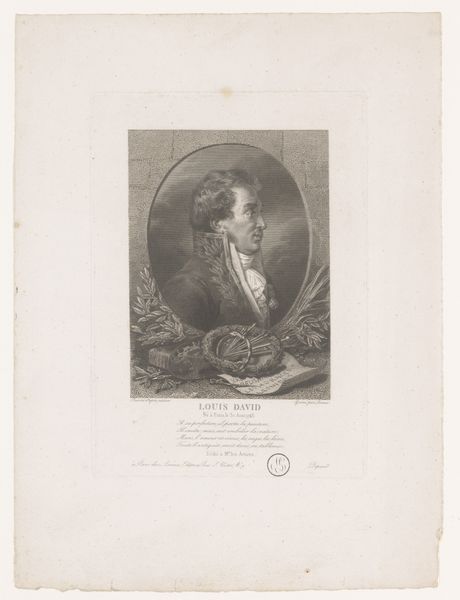
Dimensions: height 174 mm, width 128 mm
Copyright: Rijks Museum: Open Domain
Curator: Before us we have "Portret van Frederik I van Anhalt," an engraving dating back to between 1831 and 1899, attributed to W. Otto. It exemplifies the Neoclassical style, prevalent in portraiture of that era. Editor: It strikes me as almost theatrical, with the young subject positioned like a character in a historical drama, holding a rather imposing flag that nearly dwarfs him. It also reminds me a bit of those very detailed postage stamp images. Curator: Precisely! The engraving technique allows for intricate detail and fine lines, which are crucial to understanding Neoclassical aesthetics—emphasizing clarity, order, and idealized forms, influenced by classical antiquity. Semiotically, the flag, coupled with the subject's formal attire, constructs a visual narrative of authority and heritage. Editor: The softness of his youthful face juxtaposed with symbols of power creates a compelling tension. He looks almost burdened by the weight of expectation, or maybe it's the heaviness of the flag! Curator: It's a fascinating point. While adhering to Neoclassical conventions, the artist also conveys a degree of vulnerability in the subject. This ambiguity complicates any straightforward interpretation of power, layering the symbolic framework with emotional depth. Editor: Looking at this print, I find myself reflecting on legacy and the weight of inheritance, especially when glimpsed through the eyes of youth. Curator: I appreciate your sensitivity to the portrait's inherent emotional paradox. It adds a necessary counterpoint to its formal constraints. Editor: Yes, a fleeting glance reveals an artifact. A longer, more deliberate study suggests the intricate complexities of humanity itself.
Comments
No comments
Be the first to comment and join the conversation on the ultimate creative platform.
